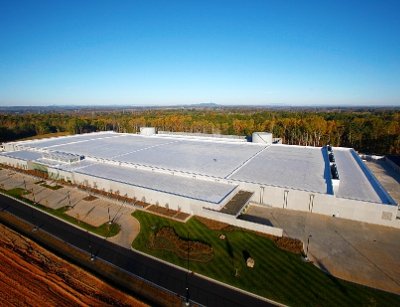Apple released a plan to get 100% of energy required by its new Maiden, North Carolina, data center from renewable sources. The plan – whose details the company published on its website Thursday – is a mixture on on-site generation and direct clean-energy purchases.
The company’s plans to install solar arrays and biogas-powered fuel cells to supply a part of the data center’s total load (20MW at full capacity) have been publicized and criticized.
In March, James Hamilton, member of the Amazon Web Services’ infrastructure team, questioned the value of Apple’s solar array in Maiden on his blog. He questioned it based on the array’s capacity in comparison with the facility’s total load and on the amount of land that would have to be cleared to make way for the solar farm.
According to the plan Apple released Thursday, the company is building two solar-array installations in and around Maiden. “These sites use high-efficiency solar cells and an advanced solar tracking system,” Apple representatives wrote.
One of the installations is being built at the data center site. It will take up 100 acres to produce 20MW of power at peak capacity.
Apple estimates this array will produce 42m kWh of energy annually. Another array of the same size and capacity is being built several miles away from the data center site.
The 5MW fuel-cell installation on site – supplied by Bloom Energy – will produce about 40m kWh of energy every year once it comes online later in 2012.
The solar arrays and the fuel cells will together produce 60% of the power required by the data center. Apple plans to buy enough renewable energy directly from local and regional suppliers to fill in the remaining 40%.
Apple is one of the few high-profile technology companies that have been publicly shamed by Greenpeace for buying “dirty” power (reliant on fossil fuels) for their data centers.
Just in February, Gary Cook, senior IT analyst at Greenpeace, wrote a blog post that was critical of Apple’s solar-farm plans in North Carolina and of its plans to build another massive data center in Prineville, Oregon, where the main energy supplier is Pacific Power.
Facebook was a subject of finger pointing by Greenpeace for the same site-selection decisions previously. The social-networking company also has a data center in Prineville.
Earlier this week, Cook delivered a keynote address at the Uptime Institute Symposium in Santa Clara, California. While taking a conciliatory tone, speaking to an audience of several hundred of data center professionals in the Silicon Valley, he said the environmentalist organization wanted the tech industry to make more effort to clean up the energy that powers it.

